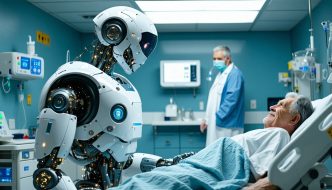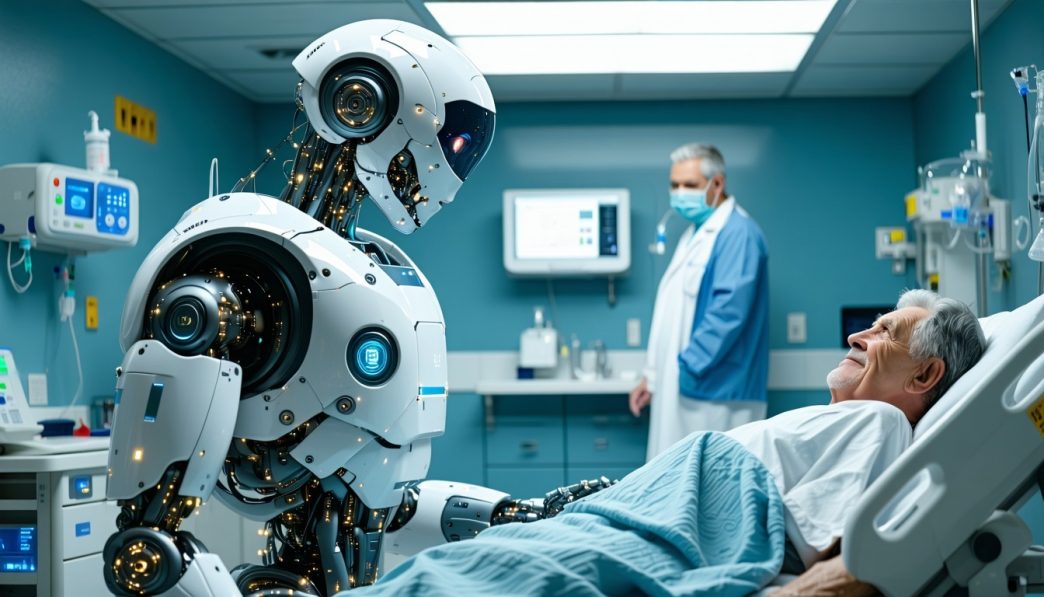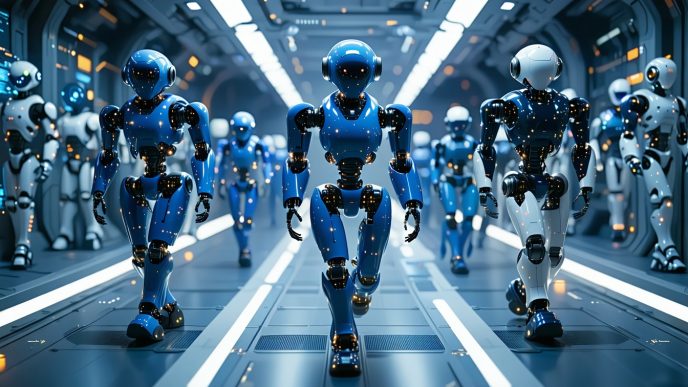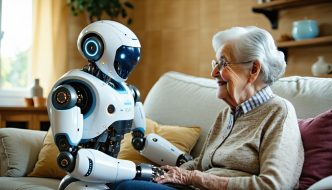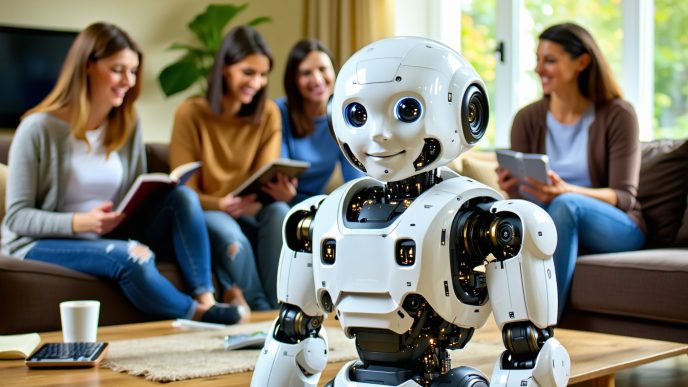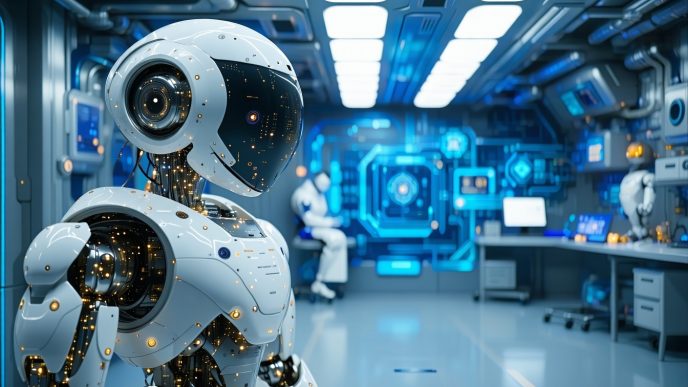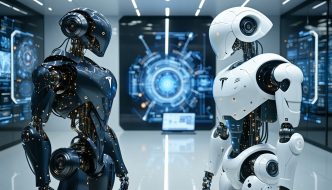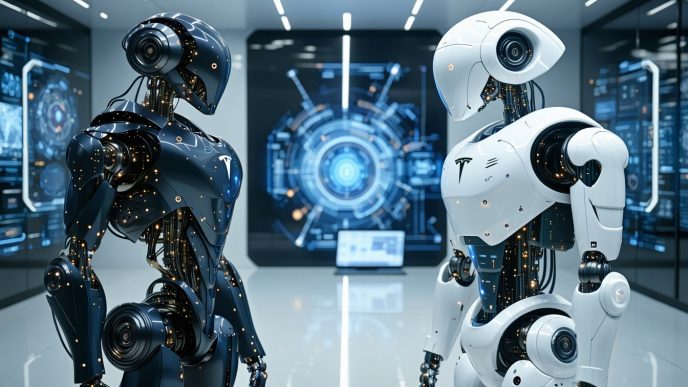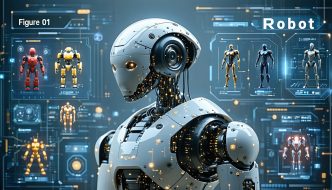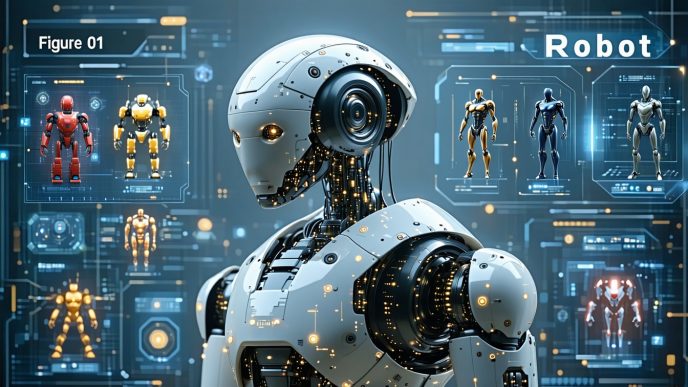Humanoid Robots in Healthcare
The use of humanoid robots in healthcare has seen significant growth in recent years. These robots are designed to resemble humans in both form and function, making them ideal for various tasks in medical settings. Their capabilities offer numerous possibilities for improving patient care and operational efficiency in hospitals and clinics.
The Rise of Humanoid Robots in Healthcare
The increasing prevalence of humanoid robots in healthcare can be attributed to advancements in robotics technology and artificial intelligence. As hospitals face challenges such as rising patient numbers, staffing shortages, and the need for more efficient processes, humanoid robots present innovative solutions. Their ability to interact with patients, assist medical professionals, and perform repetitive tasks can enhance overall patient outcomes.
Table 1 highlights key milestones in the rise of humanoid robots within the healthcare industry.
| Year | Milestone |
|---|---|
| 2000 | Introduction of basic humanoid robots in healthcare activities |
| 2010 | Development of robots for surgical assistance and rehabilitation |
| 2015 | Rise of telepresence robots for remote consultations |
| 2020 | Increased integration of robots in elder care and rehabilitation facilities |
Applications of Humanoid Robots
Humanoid robots are being applied across various aspects of healthcare, resulting in improved workflows and enhanced patient experiences. Below are some notable applications:
| Application | Description |
|---|---|
| Surgical Assistance | Humanoid robots assist surgeons in performing complex procedures with greater precision and control. |
| Telemedicine | Some robots enable remote consultations, allowing patients to connect with healthcare providers from home. |
| Patient Interaction | Humanoid robots can engage with patients, providing companionship, education about health, and answering questions. |
| Rehabilitation | Robots help patients recover from injuries through guided exercises and therapy, enhancing motivation and consistency. |
| Medication Delivery | Humanoid robots can handle logistics, such as delivering medications and samples within hospital settings. |
As healthcare systems continue to evolve, the role of humanoid robots becomes increasingly vital. Their diverse applications not only help to streamline operations but also play a role in enhancing the overall patient experience. For more information on specific types of humanoid robots and their potential applications, refer to resources on humanoid robots in elder care and humanoid robots for education.
Robot-Assisted Healthcare
Humanoid robots are increasingly being integrated into the healthcare system, enhancing various aspects of patient care, surgery, and rehabilitation. They are designed to assist medical professionals and provide services to patients. This section explores three major types of robot-assisted healthcare: surgical robots, therapy and rehabilitation robots, and service and care robots.
Surgical Robots
Surgical robots are specialized systems that provide precision in medical procedures. These robots offer benefits such as minimally invasive surgery, which can lead to quicker recovery times for patients. The integration of robotic assistance allows for smaller incisions and enhanced control during operations.
| Feature | Benefit |
|---|---|
| Precision | Increased accuracy during surgeries |
| Minimally Invasive | Reduced recovery time and pain for patients |
| 3D Visualization | Enhanced view of the surgical site for surgeons |
Surgical robots also enable remote operations, where surgeons can perform procedures from different locations. This technology is essential for expanding access to specialized care in underserved areas.
Therapy and Rehabilitation Robots
Therapy and rehabilitation robots focus on aiding patients during recovery. These humanoid robots can assist in physical therapy sessions, helping patients regain mobility and strength. They can also provide tailored rehabilitation exercises, adapting to the patient’s progress.
| Feature | Benefit |
|---|---|
| Personalized Therapy | Customizable exercise regimes based on individual needs |
| Consistency | Regular and systematic delivery of therapy sessions |
| Motivation | Engaging interactions to encourage patient participation |
Additionally, these robots can monitor patient responses and provide real-time feedback to therapists, enhancing the rehabilitation process.
Service and Care Robots
Service and care robots perform a variety of tasks that enhance patient interaction and support in healthcare settings. They can assist with medication reminders, provide companionship, and even help with meal delivery.
| Feature | Benefit |
|---|---|
| Task Automation | Reduces the workload of healthcare staff |
| Patient Engagement | Provides social interaction for patients |
| Safety Monitoring | Assists in monitoring vital signs and alerts staff when necessary |
These robots improve the overall patient experience by providing assistance in daily activities, allowing healthcare professionals to focus on more complex tasks. For more on how humanoid robots are utilized for companionship in healthcare, read our article on humanoid robots for companionship.
The integration of these various types of humanoid robots in healthcare showcases their potential to revolutionize patient care, surgical practices, and rehabilitation processes. Through ongoing developments and testing, they are set to become a cornerstone of modern medicine.
Benefits of Humanoid Robots in Healthcare
Humanoid robots are significantly transforming the healthcare sector. They offer numerous advantages that enhance medical procedures, patient interactions, and overall healthcare delivery.
Improved Precision and Efficiency
Humanoid robots can perform tasks with a level of precision that often surpasses human capabilities. This is particularly beneficial in surgical settings where accuracy is crucial. Robots can operate with finer control, allowing for minimally invasive procedures.
| Feature | Benefit |
|---|---|
| Fine motor skills | Reduced tissue damage |
| Steady hand movements | Enhanced surgical accuracy |
| Consistent performance based on programming | Greater efficiency in repetitive tasks |
The efficiency of humanoid robots also leads to quicker turnaround times for procedures, freeing healthcare professionals to focus on critical patient care activities.
Reduced Risk of Human Errors
One of the significant benefits of integrating humanoid robots in healthcare is the potential for lowering the incidence of human errors. Even well-trained professionals can make mistakes due to factors such as fatigue or distractions. Robots operate consistently, performing tasks based on programmed guidelines, thereby diminishing the likelihood of errors.
In various studies, the error rates for robot-assisted surgeries have shown significant improvement compared to traditional methods. For instance, one study indicated that robot-assisted procedures resulted in a 20% decrease in complications.
| Study Type | Error Reduction (%) |
|---|---|
| Robot-assisted surgeries | 20 |
| Manual surgeries | 10 |
This reduction is vital in ensuring patient safety and enhancing overall healthcare outcomes.
Enhancing Patient Care and Experience
Humanoid robots can also improve the patient experience in various ways. For instance, they can provide companionship and emotional support, which is especially beneficial in settings like elder care. With their ability to engage in conversations and provide reminders for medication, these robots enhance the overall comfort and care provided to patients.
| Application | Impact on Patient Care |
|---|---|
| Companionship | Reduced feelings of loneliness |
| Assistance with daily tasks | Increased independence |
| Medication reminders | Improved adherence to treatment |
In addition, their ability to efficiently handle logistical tasks in hospitals can lead to shorter wait times for patients, improving overall satisfaction with healthcare services.
Humanoid robots in healthcare offer a promising approach to improving precision, reducing errors, and enriching the patient care experience. Their continued development and integration represent a significant stride toward a more efficient healthcare system. For more insights on healthcare applications, explore our section on robot-assisted healthcare.
Challenges and Limitations
The integration of humanoid robots in healthcare presents numerous challenges that need to be addressed to fully realize their potential. These obstacles range from financial considerations to ethical dilemmas and technical hurdles.
Cost of Implementation
The initial investment required for humanoid robots in healthcare settings can be substantial. Factors influencing the overall cost include the price of the robots themselves, maintenance, software updates, and training for staff. The financial burden can deter healthcare institutions from adopting this technology.
| Cost Factors | Estimated Range |
|---|---|
| Robot Purchase | $50,000 – $500,000 |
| Maintenance Per Year | $5,000 – $20,000 |
| Training Costs | $2,000 – $10,000 |
Understanding the total cost of ownership is crucial for healthcare providers considering the implementation of humanoid robots. For more detailed financial insights, consult our article on humanoid robot costs.
Ethical and Privacy Concerns
With the introduction of humanoid robots in healthcare, ethical considerations become paramount. These robots may interact closely with patients, raising questions about patient confidentiality and informed consent. Ensuring that these robots handle sensitive patient data securely is vital to maintain trust in the healthcare system.
Furthermore, ethical dilemmas arise regarding the potential replacement of human caregivers. While robots can enhance efficiency, they should not replace the essential human touch in patient care. The balance between technology and human compassion needs to be carefully managed. For further exploration of these issues, see our article on robot emotions and ethics.
Training and Integration Issues
Successful implementation of humanoid robots in healthcare hinges on effective training and seamless integration into existing workflows. Healthcare staff may face challenges learning to work with robotic systems, which can lead to inefficiencies and hesitancy in using the technology.
Training programs need to be comprehensive and tailored to the specific functions of the robots. Additionally, integrating humanoid robots into current healthcare practices requires adjustments to workflows, which may face resistance from staff accustomed to traditional methods. Institutions need to prioritize ongoing education to overcome these hurdles. For more information on training systems, refer to our article on humanoid robot training systems.
By addressing these challenges, the potential of humanoid robots in healthcare can be more fully realized, leading to improved outcomes for patients and healthcare providers alike.
Types of Humanoid Robots in Healthcare
Humanoid robots are becoming increasingly significant in the healthcare sector, providing unique solutions tailored to various medical needs. This section explores three main types of humanoid robots used in healthcare: those for telemedicine, companion robots, and nurse robots.
Humanoid Robots for Telemedicine
Humanoid robots designed for telemedicine facilitate remote consultations between patients and healthcare providers. These robots can assist in reducing travel time and enhancing access to medical services, especially for individuals in remote areas.
| Features | Benefits |
|---|---|
| Live Video Communication | Enables real-time doctor-patient interactions. |
| Examination Capabilities | Some models can perform basic health assessments, such as heart rate monitoring. |
| Data Collection | Can gather patient information for follow-up visits. |
By leveraging technology, humanoid robots can play a crucial role in expanding telehealth initiatives. They enhance the reach of healthcare services and improve patient engagement in their health management. For more on telehealth advancements, see our article on humanoid robots in elder care.
Companion Robots in Healthcare
Companion robots are designed to provide social interaction and emotional support to patients. Particularly beneficial in settings such as nursing homes and mental health clinics, these robots can engage with patients, offering companionship and reducing feelings of loneliness.
| Features | Benefits |
|---|---|
| Conversational Abilities | Uses voice interfaces and AI for meaningful interactions. |
| Activity Engagement | Can play games, tell stories, or assist with hobbies. |
| Monitoring | Tracks changes in mood and behavior, which can aid healthcare providers. |
These robots contribute positively to the overall well-being of patients by addressing emotional health along with physical care. For insights into robot emotions and ethics, read our article on robot emotions and ethics.
Nurse Robots in Hospitals
Nurse robots assist healthcare staff by taking on routine tasks such as delivering medications, transporting supplies, and even providing basic patient monitoring. These robots allow human nurses to focus more on patient care, improving operational efficiency in healthcare facilities.
| Function | Impact |
|---|---|
| Medication Delivery | Reduces human error and enhances efficiency in medication administration. |
| Patient Monitoring | Sends alerts for vital signs changes, facilitating quicker interventions. |
| Logistics Support | Frees up medical staff to attend to more critical patient needs. |
Nurse robots exemplify the integration of technology in streamlining hospital workflows while providing essential support for healthcare teams. For more information on the role of humanoid robots in hospital care, check our article on humanoid robots for home use.
By utilizing these types of humanoid robots, the healthcare sector is poised to enhance service delivery, improve patient outcomes, and optimize overall medical practices.
Testing and Implementation
Clinical Trials and Studies
Clinical trials are essential for assessing the performance and safety of humanoid robots in healthcare settings. These studies typically focus on various applications, such as surgical assistance, rehabilitation, and patient care. Researchers evaluate how effectively these robots interact with medical staff and patients during different procedures.
A limited number of clinical trials have reported initial findings on humanoid robots. The following table summarizes some important aspects:
| Trial Focus | Number of Participants | Duration | Findings |
|---|---|---|---|
| Surgical Assistance | 100 | 12 months | Improved precision in procedures. |
| Rehabilitation | 50 | 6 months | Enhanced patient recovery rates. |
| Patient Interaction | 75 | 8 months | Increased patient satisfaction and engagement. |
Real-World Applications
In real-world scenarios, humanoid robots are increasingly being integrated into hospitals and clinics. They assist healthcare professionals in various capacities, ranging from surgical procedures to providing companionship to patients. Observations from these deployments reveal valuable information about efficiency and patient interactions.
| Application | Description | Benefits |
|---|---|---|
| Surgical Robots | Assist surgeons during operations | Increased accuracy and reduced recovery time |
| Therapy Robots | Support physical and mental rehabilitation | Improved patient engagement and motivation |
| Care Robots | Aid in monitoring and caring for patients | Enhanced patient safety and autonomy |
The implementation of these robots not only streamlines workflows but also enhances overall healthcare services.
Feedback and Results
Feedback from healthcare professionals and patients is critical in assessing the effectiveness of humanoid robots. Initial responses highlight both enthusiasm and concerns regarding their capabilities and limitations. Many healthcare workers have noted the following points based on their experiences:
| Feedback Type | Positive Aspects | Concerns |
|---|---|---|
| Healthcare Workers | Improved operational efficiency | Need for better training on robot usage |
| Patients | Enhanced interaction and support | Concerns about privacy and emotional connection |
As humanoid robots continue to be tested and refined, ongoing feedback remains essential for further development in the field. For insights into implications of humanoid robots on privacy, refer to our article on humanoid robots and privacy.
Future Outlook
Advancements in Robotics Technology
The future of humanoid robots in healthcare is set to soar with continuous advancements in robotics technology. Emerging innovations include enhanced artificial intelligence (AI) capabilities, improved sensory systems, and more efficient algorithms that will allow these robots to interact more naturally with patients. Moreover, the integration of emotion recognition in robots will enable more empathetic responses in caregiving scenarios.
The following table highlights anticipated advancements in humanoid technologies relevant to healthcare:
| Technology Area | Expected Advancements | Potential Impact |
|---|---|---|
| AI Algorithms | More complex reasoning and decision-making capabilities | Better patient diagnosis and care customization |
| Sensory Systems | Enhanced touch and sight capabilities | Improved interaction with patients |
| Mobility Systems | Advanced locomotion to navigate various environments | Increased ability to assist in diverse settings |
| Customization | Enhanced programming for individual patient needs | More tailored healthcare solutions |
These advancements will increase the versatility of humanoid robots in various healthcare applications.
Potential Impact on Healthcare Industry
As humanoid robots become more sophisticated, their potential impact on the healthcare industry is profound. They may significantly reduce the workload of medical professionals by handling repetitive tasks, allowing healthcare workers to focus more on critical patient care. This shift could lead to improved overall efficiency within healthcare facilities.
In addition to operational benefits, humanoid robots could enhance patient experiences. They can provide companionship, assistance, and reminders for medications, particularly in elder care settings. The use of humanoid robots in elder care is expected to contribute positively to the quality of life for elderly individuals.
| Impact Area | Anticipated Changes | Result |
|---|---|---|
| Workload Management | Delegation of routine tasks | More time for healthcare professionals to engage with patients |
| Patient Interaction | Companionship and support | Improved mental health and satisfaction |
| Training and Support | Assistance with rehabilitation and mobility | Better recovery outcomes for patients |
Overall, the integration of humanoid robots in healthcare is anticipated to transform patient care delivery, enhance operational efficiency, and create a more responsive healthcare environment. The ongoing development in this field will continually shape the future landscape of healthcare services.
